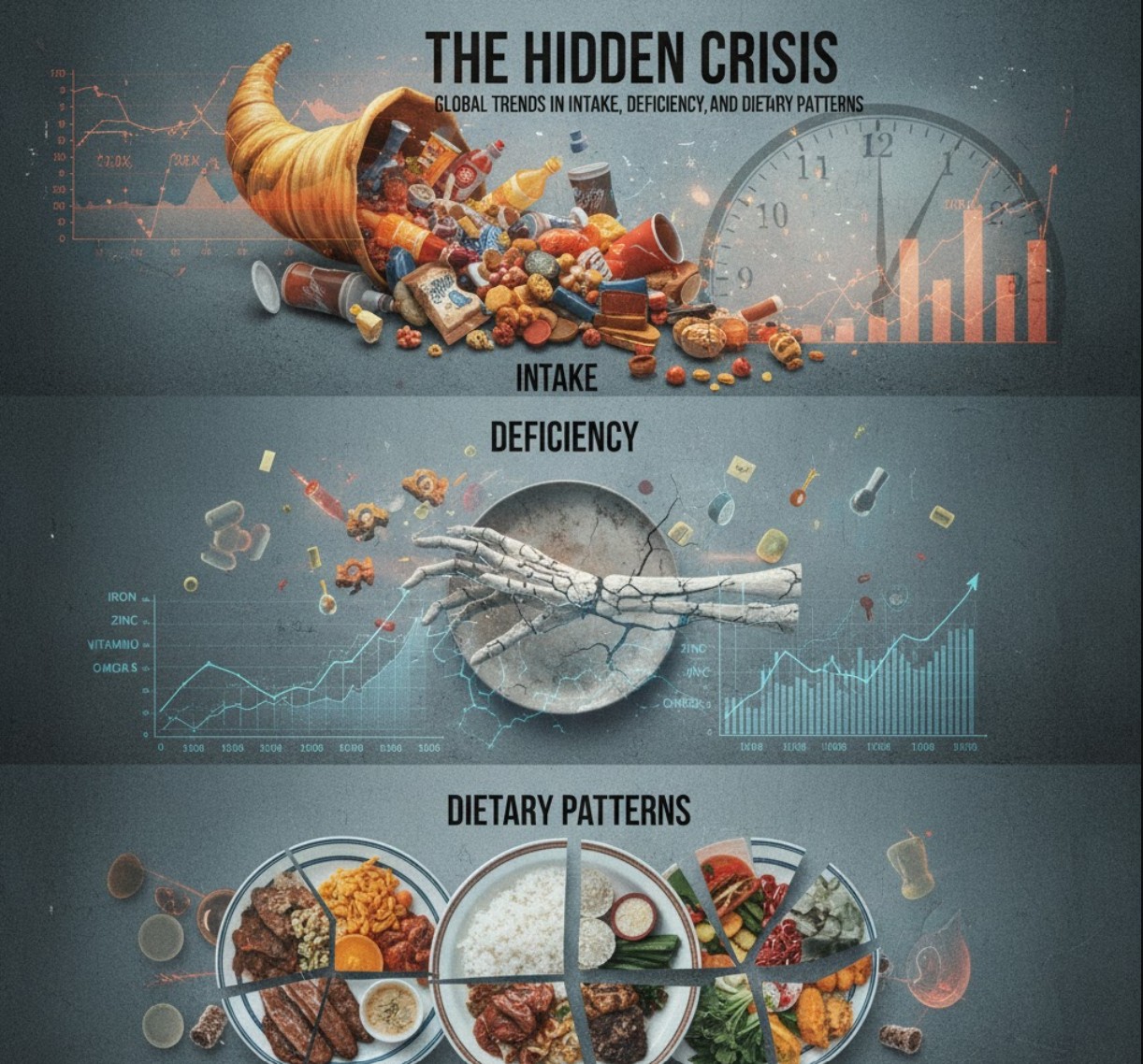The most insidious global trend is the vast and underestimated scale of micronutrient deficiencies (MNDs), or Hidden Hunger. Micronutrients—vitamins and minerals like iron, iodine, zinc, and Vitamin A—are essential for cognitive function, immune response, and physical development. Inadequate intake of these ‘vital cogs’ affects global health on a monumental scale.
Recent, more rigorous assessments have shattered the decades-old estimate that two billion people suffer from MNDs. New findings indicate that one in two pre-school aged children and two in three women of reproductive age worldwide are affected by at least one vitamin or mineral deficiency. When extrapolated to the entire global population, the true number is dramatically higher.
The most prevalent global deficiencies include:
- Iron (Anemia): Affecting nearly one-third of women of reproductive age and four-in-ten children under five globally, anemia impairs cognitive development and worker productivity, and is a major cause of maternal mortality.
- Iodine: Deficiency is a leading preventable cause of intellectual disability. Despite massive salt iodization efforts, inadequacies persist in approximately 68% of the global population.
- Vitamin A: A primary cause of preventable blindness in children and a major risk factor for mortality from infectious diseases.
While most pronounced in South Asia and Sub-Saharan Africa, a significant and often overlooked trend is the high prevalence of MNDs even in high-income countries, demonstrating that a mere abundance of food does not guarantee nutritional adequacy.
Ultra-Processed Foods: The Driver of a Dysfunctional Diet
One of the single greatest contributors to the global deterioration of dietary quality is the dramatic rise in the consumption of Ultra-Processed Foods (UPFs). These industrial formulations, stripped of their original nutritional integrity and enhanced with high levels of sugar, salt, fat, and artificial additives, now constitute 50%–60% of the daily energy intake in several high-income countries and are rapidly penetrating LMICs.
The impact of UPFs is twofold:
- Nutrient Displacement: UPFs displace the consumption of minimally processed, nutrient-dense foods (fruits, vegetables, whole grains). This inverse relationship means that high UPF consumption is directly associated with a significantly increased risk of micronutrient inadequacy, particularly for essential vitamins and minerals like Vitamin C, A, B-vitamins, Iron, and Zinc. The increased intake of energy from UPFs, which are high in simple calories, directly contributes to the global surge in overweight and obesity.
- Health Outcomes: Diets high in UPFs are strongly linked to the risk of hypertension, metabolic syndrome, dyslipidemia, and an elevated risk of all-cause mortality, making them a central driver of the burgeoning NCD crisis.
This combination of caloric excess and nutrient emptiness perfectly illustrates the central contradiction of the triple burden of malnutrition.
Pathways to Sustainable and Healthy Dietary Patterns
Addressing this complex crisis requires a monumental shift, moving beyond individual nutrients to focus on holistic, sustainable dietary patterns. The current trends are environmentally unsustainable, with the global food system being the single largest human pressure on the planet, responsible for a significant portion of greenhouse gas (GHG) emissions and freshwater use.
The consensus among global health and environmental bodies is a transition toward plant-predominant diets, which are simultaneously healthier for humans and the planet:
- The EAT-Lancet Commission Diet: A globally applicable framework that emphasizes a substantial reduction in red meat and sugar consumption, while dramatically increasing the intake of fruits, vegetables, legumes, and nuts. Such a transition is projected to reduce GHG emissions by up to 80% and prevent millions of premature deaths annually.
- Regional Models: The Mediterranean Diet and DASH Diet, which prioritize vegetables, olive oil, fish, whole grains, and a modest intake of dairy and poultry, remain universally endorsed for their protective effects against cardiovascular disease and all-cause mortality.
The challenge lies in making these optimal patterns accessible, affordable, and culturally acceptable for the estimated three billion people who cannot afford a healthy diet. This necessitates systemic policy interventions:
- Reform of agricultural subsidies to incentivize the production of nutrient-dense crops over resource-intensive, staple commodities.
- Fiscal policies like sugar taxes to discourage UPF consumption.
- Regulation of food marketing aimed at children to protect the developing generation from unhealthy dietary influences.
The current global trends in intake, deficiency, and dietary patterns paint a sobering picture of a world where insufficient nutrient quality is a global issue, not just a matter of poverty. Overcoming this hidden crisis requires a unified political will to reform our food environments, shifting the focus from simply feeding the world to ensuring every citizen has access to truly nutritious, health-promoting, and sustainable food.



